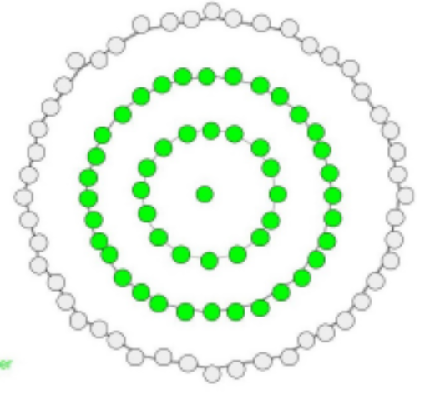


Indian Journal of Science and Technology
DOI: 10.17485/IJST/v17i20.1183
Year: 2024, Volume: 17, Issue: 20, Pages: 2074-2078
Original Article
V Sangeetha1*, T Anupreethi2, Manju Somanath3
1Assistant Professor, PG and Research Department of Mathematics, National College
(Autonomous) (Affiliated to Bharathidasan University), Trichy, 620 001, Tamil Nadu, India
2Research Scholar, PG and Research Department of Mathematics, National College
(Autonomous) (Affiliated to Bharathidasan University), Trichy , 620 001, Tamil Nadu, India
3Associate Professor and Research Advisor, PG and Research Department of Mathematics,
National College (Autonomous) (Affiliated to Bharathidasan University), Trichy, 620 001, TamilNadu, India
*Corresponding Author
Email: [email protected]
Received Date:10 April 2024, Accepted Date:28 April 2024, Published Date:14 May 2024
Background/Objectives: Elliptic Curve Cryptography (ECC) is a public-key encryption method that is similar to RSA. ECC uses the mathematical concept of elliptic curves to achieve the same level of security with significantly smaller keys, whereas RSA's security depends on large prime numbers. Elliptic curves and their applications in cryptography will be discussed in this paper. The elliptic curve is formed by the extension of a Diophantine pair of Centered Hexadecagonal numbers to a Diophantine triple with property D(8). Method: The Diffie–Hellman key exchange, named for Whitfield Diffie and Martin Hellman, was developed by Ralph Merkle and is a mathematical technique for safely transferring cryptographic keys over a public channel. Based on the Diffie–Hellman key exchange, the ElGamal encryption system is an asymmetric key encryption algorithm for public-key cryptography. The generation of keys, encryption and decryption are the three main operations of the ElGamal cryptosystem. Findings: Given the relative modesty of our objectives, the fundamental algebraic and geometric characteristics of elliptic curves shall be delineated. Then the behaviour of elliptic curves modulo p: ultimately, there is a fairly strong analogy between the structure of the points on an elliptic curve modulo p and the integers modulo n will be studied. In the end, elliptic curve ElGamal encryption analogues of Diffie–Hellman key exchange will be created. Novelty: Elliptic curves are encountered in a multitude of mathematical contexts and have a varied and fascinating history. Elliptic curves are very significant in number theory and are a focus of much recent work. The earlier research works in Elliptic Curve Cryptography has concentrated on computer algorithms and pairing – based algorithms. In this paper, the concept of polygonal numbers and its extension from Diophantine pair to triples is encountered, thus forming an elliptic curve and perform the encryption-decryption process. MSC Classification Number: 11D09, 11D99,11T71,11G05.
Keywords: Elliptic curves, Cryptography, Encryption, Decryption, Centered polygonal numbers
© 2024 Sangeetha et al. This is an open-access article distributed under the terms of the Creative Commons Attribution License, which permits unrestricted use, distribution, and reproduction in any medium, provided the original author and source are credited. Published By Indian Society for Education and Environment (iSee)
Subscribe now for latest articles and news.